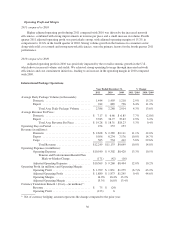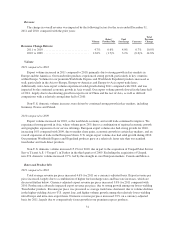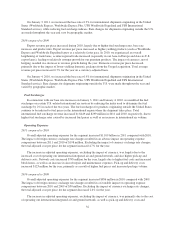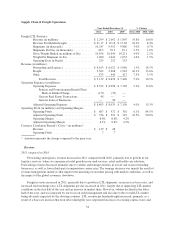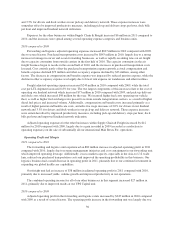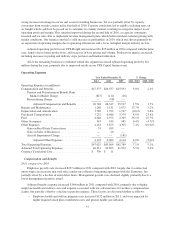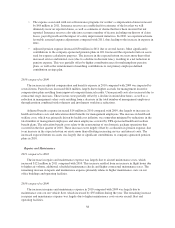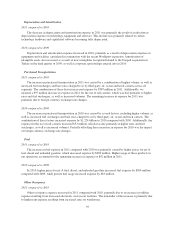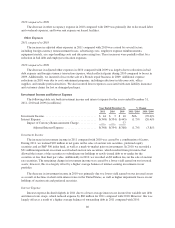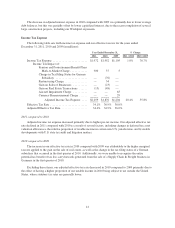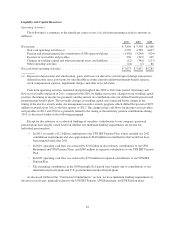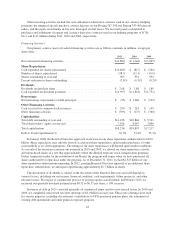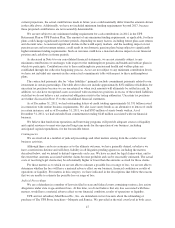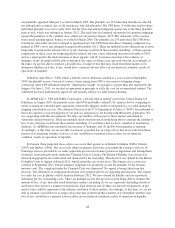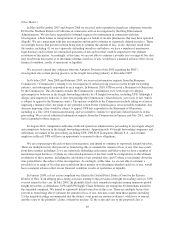UPS 2011 Annual Report Download - page 51
Download and view the complete annual report
Please find page 51 of the 2011 UPS annual report below. You can navigate through the pages in the report by either clicking on the pages listed below, or by using the keyword search tool below to find specific information within the annual report.Depreciation and Amortization
2011 compared to 2010
The decrease in depreciation and amortization expense in 2011 was primarily the result of a reduction in
depreciation expense on technology equipment and software. This decline was primarily related to certain
technology hardware and capitalized software becoming fully depreciated.
2010 compared to 2009
Depreciation and amortization expense increased in 2010, primarily as a result of depreciation expense on
equipment and facilities capitalized in conjunction with the recent Worldport expansion. Amortization of
intangible assets also increased as a result of new intangibles recognized related to the Unsped acquisition in
Turkey in the third quarter of 2009, as well as corporate sponsorships entered into in 2010.
Purchased Transportation
2011 compared to 2010
The increase in purchased transportation in 2011 was caused by a combination of higher volume, as well as
increased fuel surcharges and base rates charged to us by third-party air, ocean and truck carriers across all
segments. The combination of these factors increased expense by $387 million in 2011. Additionally, we
incurred a $97 million increase in expense in 2011 for the use of rail carriers, which was due primarily to higher
rates and fuel surcharges, as well as increased volumes. The remaining increase in expense for 2011 was
primarily due to foreign currency exchange rate changes.
2010 compared to 2009
The increase in purchased transportation in 2010 was caused by several factors, including higher volume, as
well as increased fuel surcharges and base rates charged to us by third-party air, ocean and truck carriers. The
combination of these factors increased expense by $1.224 billion in 2010 compared with 2009. Additionally, the
expense for the use of rail carriers increased $53 million, which was due primarily to higher rates and fuel
surcharges, as well as increased volumes. Partially offsetting these increases in expense for 2010 was the impact
of foreign currency exchange rate changes.
Fuel
2011 compared to 2010
The increase in fuel expense in 2011 compared with 2010 was primarily caused by higher prices for jet-A
fuel, diesel and unleaded gasoline, which increased expense by $982 million. Higher usage of these products in
our operations accounted for the remaining increase in expense of $92 million in 2011.
2010 compared to 2009
In 2010, higher prices for jet-A fuel, diesel, and unleaded gasoline increased fuel expense by $564 million
compared with 2009, while greater fuel usage increased expense by $43 million.
Other Occupancy
2011 compared to 2010
Other occupancy expense increased in 2011 compared with 2010, primarily due to an increase in utilities
expense resulting from increased electricity costs in our facilities. The remainder of the increase is primarily due
to higher rent expense resulting from increased rates on warehouses.
39



